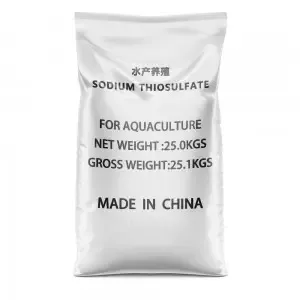



chemical treatment for water purification
Chemical Treatment for Water Purification
Water is a vital resource for all life on Earth, and ensuring its purity is essential for health and safety. Chemical treatment methods have emerged as effective solutions for water purification, utilizing various substances to eliminate contaminants and make water safe for consumption. This article will explore some common chemical treatment techniques and their applications in water purification.
One of the oldest and most widely used methods of chemical water purification is chlorination. Chlorine is a powerful disinfectant that effectively kills bacteria, viruses, and other pathogenic microorganisms. The addition of chlorine to water can dramatically reduce the risk of waterborne diseases, making it an essential step in municipal water treatment processes. However, while chlorination is effective, it can also produce harmful byproducts, such as trihalomethanes, which are associated with long-term health risks. Consequently, water treatment facilities must carefully monitor chlorine levels and consider using alternative disinfection methods, such as chloramination or ultraviolet (UV) light treatment, to enhance safety.
Another common chemical treatment is coagulation and flocculation. This process involves the addition of coagulants, such as aluminum sulfate or ferric chloride, to the water, which causes small particles, organic matter, and colloids to clump together—forming larger aggregates known as flocs. These flocs can then be easily removed from the water through sedimentation or filtration. Coagulation and flocculation are particularly effective in treating turbid water, where suspended solids may pose challenges to water clarity and safety.
chemical treatment for water purification

Furthermore, advanced oxidation processes (AOPs) are emerging as potent chemical treatments for water purification. These techniques involve the generation of highly reactive species, such as hydroxyl radicals, that can effectively break down a wide range of organic contaminants, including pharmaceuticals and industrial chemicals. AOPs typically utilize oxidants like ozone, hydrogen peroxide, or titanium dioxide in combination with ultraviolet light. As these processes gain popularity, researchers continue to explore their effectiveness in treating complex water pollutants that are resistant to traditional methods.
Ion exchange is another chemical treatment method used to purify water, especially in groundwater sources where heavy metals and other ions might be present. During ion exchange, undesirable ions in the water are exchanged with harmless ions from a resin or membrane. For instance, in the case of hard water, calcium and magnesium ions can be replaced with sodium ions, effectively softening the water. This method is frequently employed in industrial applications and can also be effective in treating drinking water supplies.
Despite the advantages offered by chemical treatment methods, it is critical to maintain a balanced approach to water purification. The overuse or misapplication of chemicals can lead to environmental concerns, such as chemical runoff and the disruption of aquatic ecosystems. Additionally, the potential formation of toxic byproducts necessitates ongoing research and regulation to ensure that water treatment practices prioritize public health and environmental integrity.
In conclusion, chemical treatment for water purification plays an essential role in ensuring clean, safe drinking water. From chlorination and coagulation to advanced oxidation processes and ion exchange, these methods can effectively remove contaminants and improve water quality. However, as we continue to innovate in water treatment technologies, it is crucial to remain vigilant about the environmental impacts and health implications associated with chemical use. By doing so, we can work towards a sustainable future where everyone has access to safe and clean water.
-
Why Sodium Persulfate Is Everywhere NowNewsJul.07,2025
-
Why Polyacrylamide Is in High DemandNewsJul.07,2025
-
Understanding Paint Chemicals and Their ApplicationsNewsJul.07,2025
-
Smart Use Of Mining ChemicalsNewsJul.07,2025
-
Practical Uses of Potassium MonopersulfateNewsJul.07,2025
-
Agrochemicals In Real FarmingNewsJul.07,2025
-
Sodium Chlorite Hot UsesNewsJul.01,2025










